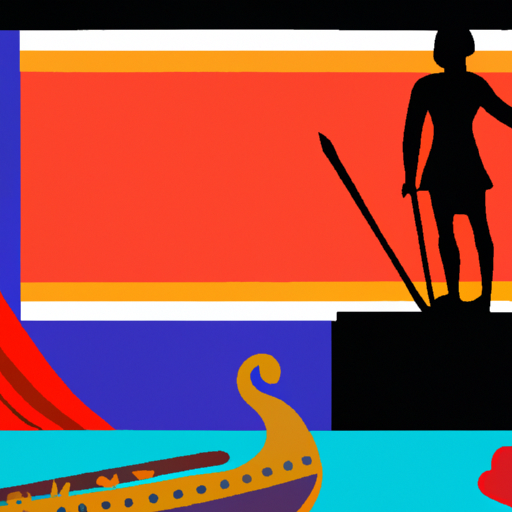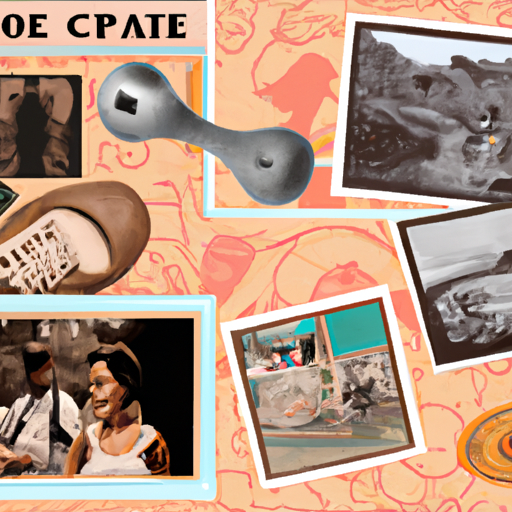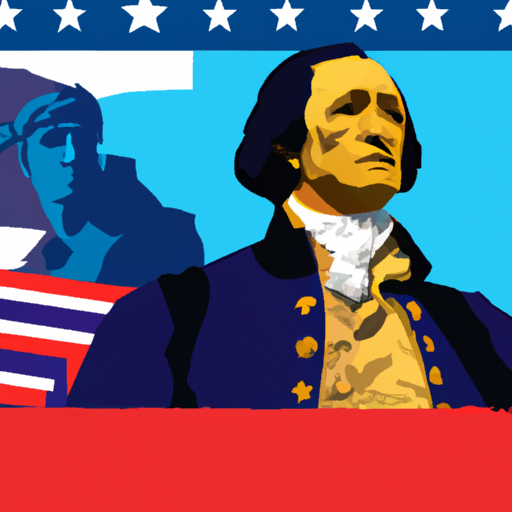History: The End of the Viking Age
Unearth the secret of who put an end to the Viking Age! Delve into a past shrouded in mystery, and discover the tale of what brought this era to its conclusion. Uncover clues that have been hidden away for centuries, and explore the possibility that something or someone was responsible for ending this remarkable period in time. Unravel the story behind who or what may have been the cause of its demise, and uncover a legacy that has endured through time.

A fog of uncertainty shrouds the conclusion of the Viking Age. What or who was behind its abrupt ending? To uncover the truth, we must delve into the past and seek out any clues that may have been hidden away for centuries. Could a powerful ruler or a catastrophic natural event have brought about its demise? We can only speculate as to who or what may have caused it to come to an end. But one thing is certain: this period in time has left a lasting legacy, giving us an understanding of our ancestors and their way of life. Uncovering the mystery of what ended the Viking Age could reveal a captivating story that will leave you spellbound!
.
Introduction
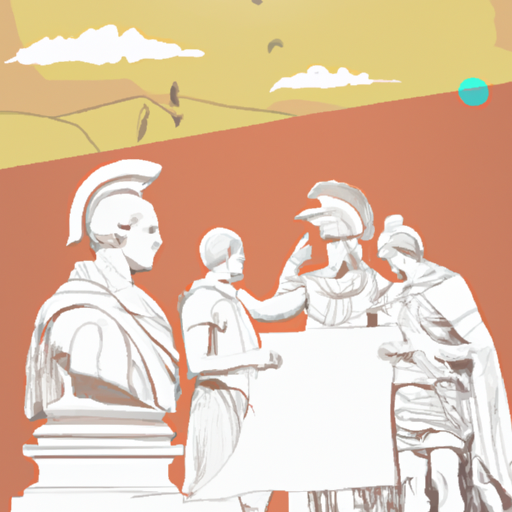
A period of Scandinavian exploration and expansion, the Viking Age began in the 8th century and lasted until the 11th. But it was the Battle of Stamford Bridge in 1066 that signified its conclusion; King Harold II of England emerged victorious over an invading Norwegian force led by Harald Hardrada. With Hardrada’s death, large-scale Viking invasions ceased, and their influence subsequently dwindled across Europe. An event that left a lasting impression on European history, the ending of the Viking Age is now firmly entrenched in time.
– History of the End of the Viking Age
An enigmatic and tumultuous period of transition, the end of the Viking Age was a time of great upheaval. Circa 800 CE, Scandinavian seafarers set sail into the unknown North Sea and beyond, establishing settlements in England, France, Ireland, Scotland, Iceland, Greenland and even parts of North America. By 900s CE, Viking culture had extended its reach across much of northern Europe. Nevertheless, powerful states such as England and France began to resist their expansion. Simultaneously, internal strife within Scandinavia further weakened the empire’s power. Subsequently by 1100 CE most major Viking settlements had been deserted or conquered by other forces. Thus bringing to a close an era that saw remarkable feats of exploration and conquest by these brave seafarers; ushering in a new age wherein powerful nations would come to dominate European history for centuries afterwards.
– Causes of the Decline of Viking Power
The waning of Viking might in the 11th century was a pivotal moment in European history. Although there are numerous theories as to why this happened, most historians accept that it was due to a combination of political, economic, and cultural elements. Politically, the Vikings had become divided by internal strife and an absence of powerful authority, which impaired their ability to secure their realms and resulted in the ascendancy of influential regional states such as England and France.
Economically, the Vikings were unable to keep pace with the evolving trade networks that emerged during this time period. As money and coins became more commonplace, they were at a disadvantage compared to larger countries who had access to these resources. In addition, their raids on other nations started to have negative consequences as they encountered greater resistance from those they attacked.
Culturally, Christianity began to spread throughout Europe during this era which presented another challenge for the Vikings. They were either unwilling or unable to modify their customs and beliefs so as to coexist with other cultures; leading them into conflicts with many of their neighboring countries who viewed them as a menace.
The decrease of Viking power was an essential occurrence in European history that symbolized the end of an era. Though it is impossible to point out one particular cause for its downfall, it is evident that political, economic, and cultural factors all had a hand in its demise.
– Impact of Christianity on Viking Culture
The complexities of Christianity’s infiltration into Viking culture are far-reaching and multifaceted. As early as the 8th century, Christian missionaries ventured to Scandinavia, introducing a religion that was foreign to the polytheistic beliefs of the Vikings. Over time, however, the two faiths began to coexist and even influence one another. In certain regions such as Norway and Denmark, Christianity eventually became the dominant belief system.
Christianity had a significant impact on Viking society in terms of values and social structure: it brought concepts like monogamy and equality between men and women that were previously absent from traditional Viking culture. Furthermore, it shaped the legal system by introducing ideas about justice and punishment based on Biblical teachings.
Christianity also affected art and literature during this era; many works contain Christian themes or symbols. For instance, some sagas feature characters inspired by Biblical figures such as Jesus or Adam and Eve. Moreover, religious motifs can be seen in jewelry from this period featuring crosses or other religious symbols.
To this day, Christianity continues to have an indelible imprint on Viking culture – from social norms to art and literature – making it an integral part of Nordic history.
– Historical Significance of the Viking Age
A period of immense consequence, the Viking Age spanned from the 8th to 11th centuries. Norse peoples from Scandinavia and their descendants explored, traded, and settled in many parts of Europe and beyond during this time. Their might left an indelible mark on European culture.
This era was marked by several monumental events that would shape history’s course. One of these was the establishment of permanent settlements in Britain and Ireland, providing a foundation for further exploration and trade throughout Europe. Additionally, raids and plundering of coastal towns in England, France, Spain, and Italy occurred – fostering contact between different cultures while spreading knowledge about technology, language, art, literature, and religion across the continent.
The Vikings also had a great hand in forming new laws and social structures throughout Europe; introducing their own oral-based legal system known as “Thing” or “Ting” law which is still seen today in many modern systems of justice. Furthermore, they had a significant impact on religious beliefs during this time; Christianity spread through missionary work conducted by monks like Ansgar who travelled to Scandinavia to convert people to the faith – though it wasn’t always peaceful – leading to a more unified religious landscape where paganism and Christianity existed side by side until Christianity eventually became dominant by the end of the Viking Age.
The legacy of this epoch is still felt today in various aspects of European life such as law, religion, literature, technology etc., making it clear that these Norse seafarers have left an enduring impression that will continue to be studied for generations to come.
– Legacy of the Vikings in Modern History
A legacy of the Vikings has been left in modern history, still being felt in many facets of life. From Scandinavian language and literature to the discovery of new lands and the establishment of trading routes, their impact has been profound. Old Norse words are used in English today, such as “law,” “window,” “sky,” and “husband.” Viking sagas remain popular, as do works by authors like J.R.R Tolkien who were heavily influenced by Viking mythology.
In politics and warfare across Europe, they were renowned for their fierce raids that often led to territorial expansion. This helped create strong monarchies in Britain, France and other countries which could resist Viking attacks due to their centralized power structures. The Vikings brought new technologies such as shipbuilding methods that enabled them to traverse vast distances across open seas with ease.
Exploration and trade saw them connecting Europe with North America and Russia; cultural exchange between different cultures was enabled, as well as economic growth through trading goods like fur pelts or fish oil for silver coins or jewelry from distant lands. Their navigational abilities also led them to discover Iceland and Greenland before anyone else did – something which would be essential to European colonization efforts during the Age of Exploration centuries later.
Today, aspects of modern life carry traces of Viking culture: from their seafaring prowess (which is celebrated in films like “Vikings”), to their artistry (which can be seen everywhere from jewelry designs to tattoos), it is clear that these ancient warriors have made an everlasting imprint on history that continues to shape our world today!
conclusion
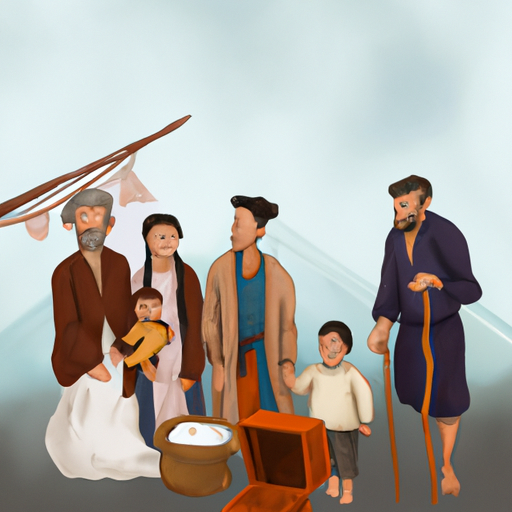
A period of time that has been referred to as the Viking Age is believed to have come to a close in the latter stages of the 11th century. This was as Scandinavian leaders adopted Christianity and bolstered their authority, bringing an end to raids conducted against other European nations. Usually, this is viewed as the conclusion of the Viking Age, yet certain historians claim it endured into the early 13th century.
.
Some questions with answers
Q1. Who ended the Viking Age?
A1. The decline of the Viking Age is traditionally dated to 1066 with the death of King Harald Hardrada at the Battle of Stamford Bridge.
Q2. When did the Viking Age end?
A2. The decline of the Viking Age is traditionally dated to 1066 with the death of King Harald Hardrada at the Battle of Stamford Bridge.
Q3. How did it end?
A3. The decline of the Viking Age is attributed to a variety of factors, including changes in European politics, economics, and religion as well as internal conflicts within Scandinavian society.
Q4. What caused its decline?
A4. The decline of the Viking Age is attributed to a variety of factors, including changes in European politics, economics, and religion as well as internal conflicts within Scandinavian society.
Q5. What other historical events occurred during this time period?
A5. During this time period, there were many important historical events such as William I’s conquest of England in 1066, the founding of Normandy in 1060, and Otto I’s coronation as Holy Roman Emperor in 962.
